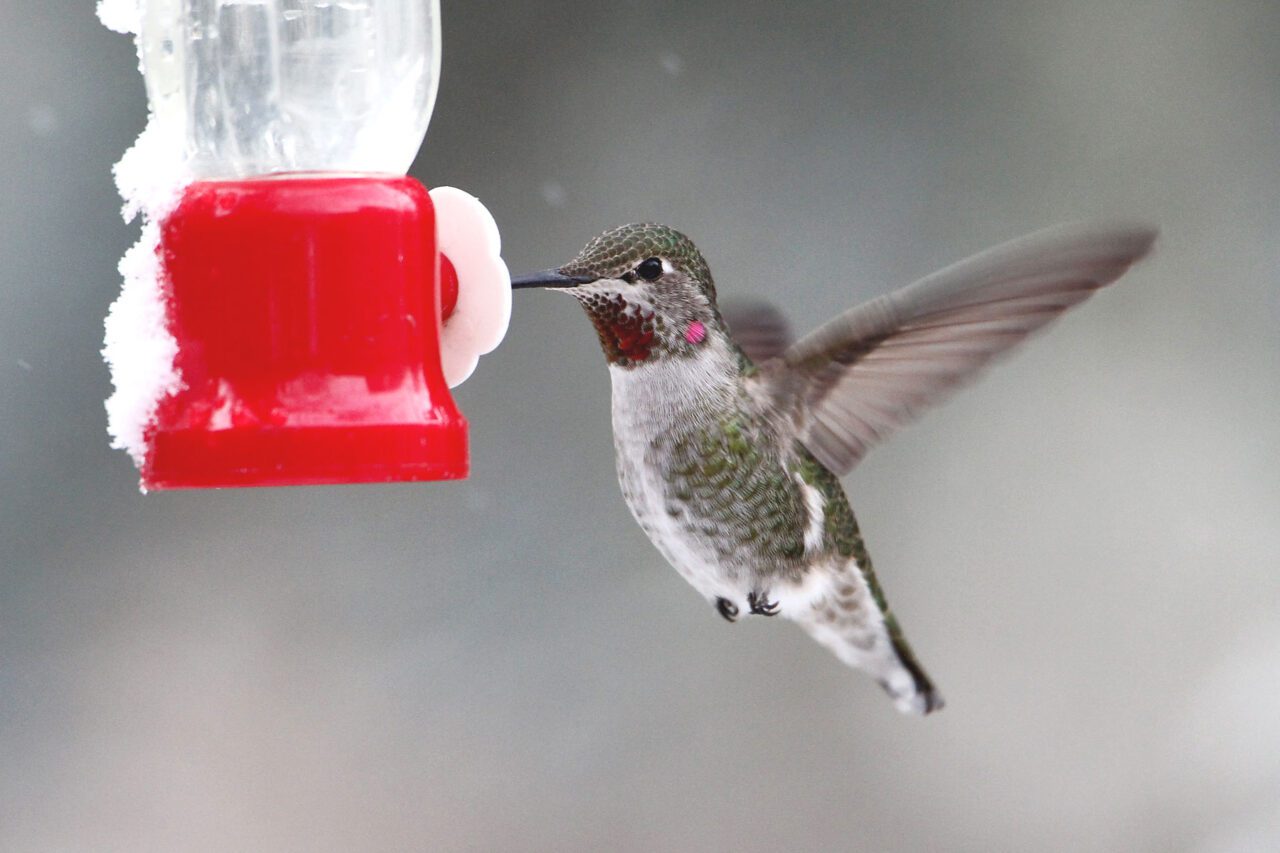There’s a hummingbird at my feeder in the dead of winter. Will it be okay?

Hummingbirds are remarkably tolerant of cold weather, so it’s likely your bird will be fine if it can continue to find food. Individuals of a few hummingbird species, most often Rufous but also some Allen’s, Anna’s, and others, have been wintering further north in recent years. Reports of Rufous Hummingbird during the winters of 2012—2015 include Michigan, upstate New York, Wisconsin, Massachusetts and Indiana! Anna’s Hummingbird regularly winters as far north as British Columbia, and have even been spotted in Alaska. You can get an idea of where hummingbirds have been found in winter by looking at maps from eBird, like this one of Rufous Hummingbird during the winters from 2012—2015.
For reasons still not well understood, more and more of these birds are surviving the entire season even in more northerly areas.
Birds of all species, whether rarities or right in the heart of their wintering range, do die over winter, but as long as they have reliable food sources they have a reasonable chance of surviving well into the season. Some have even returned to the same feeders from one winter to the next.
Read More

All About Birds
is a free resource
Available for everyone,
funded by donors like you
American Kestrel by Blair Dudeck / Macaulay Library
